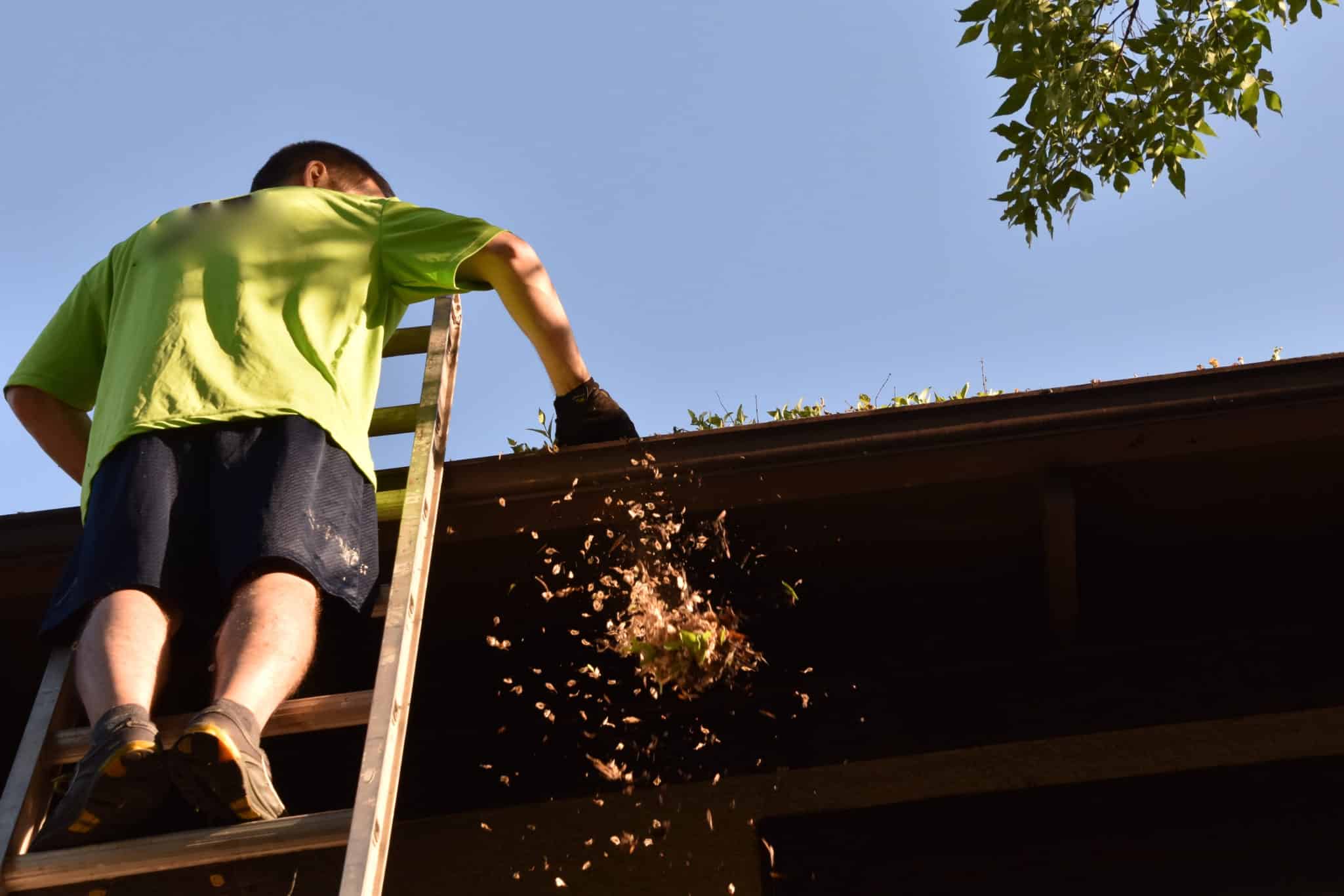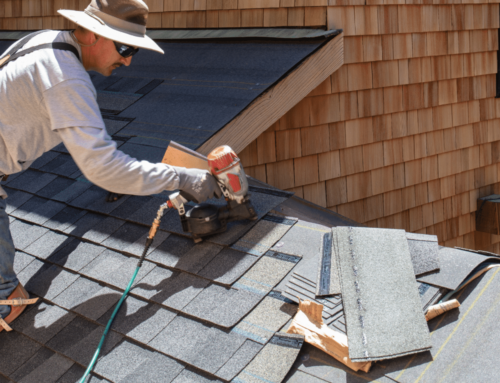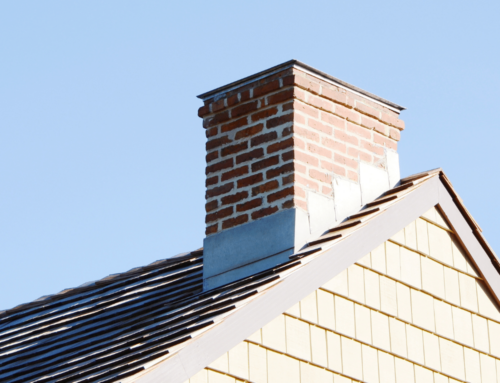Tools for the Task
As with any household chore, a little preparation goes a long way. Gather the tools you’ll need before you begin:
- Sturdy ladder (extension ladder for second story)
- Tarp
- Buckets with S-hooks or handled plastic bags
- Safety goggles or glasses
- Work gloves (optional latex gloves for layering under work gloves)
- Trowel or handled scoop
- Garden hose with spray nozzle (optional telescoping garden hose attachment with gutter-cleaning nozzle)
- Screwdriver to remove and reattach downspout if it runs underground
- Optional plumber’s snake for stubborn downspout clogs
Safety First
Although the task of cleaning rooftop gutters is simple, the chore can quickly turn dangerous if you don’t take the necessary precautions. If you’re unsure about anything, it’s best to hire a professional. Here’s what we recommend:
- A sturdy ladder planted firmly on level ground is step one. Use a stepladder whenever possible on solid, level ground and don’t climb above the second-to-last step. For two-story homes, you might have to use an extension ladder.
- When climbing the ladder, avoid carrying tools like trowels or anything sharp inside pockets. In the worst-case scenario — a fall — you don’t want to land on the wrong end of a screwdriver. Instead, put the tools in a bucket or handled plastic bag, carry it up the ladder and hook it to the top with an S-hook or something similar.
- Wear sturdy shoes.
- Use safety goggles or glasses to protect your eyes from loose dirt and debris. Don’t get caught standing on a high ladder without being able to see.
- Avoid working near power lines that may hang near your rooftop so there’s no possibility of electric shock from coming into contact with live wires. If your roof is near power lines, consider hiring a professional.
How to Clean Gutters
Although there are several variations on the process, here is a breakdown of the task:
1. Position the ladder near a downspout and spread a tarp under the section of gutter to be cleaned.
2. Hook a bucket of tools and an empty bucket to the top of the ladder. With gloved hands and a trowel, remove large debris (leaves, twigs, etc.) and dump it into the empty bucket. Work your way toward toward the opposite end, away from the downspout.
3. To clean out the remaining dirt and small debris, climb the ladder with a hose equipped with a spray nozzle. Once you’re positioned at the end of the gutter opposite the downspout, open the nozzle and flush out the gutter. The water and small debris should drain down the spout at the other end.
4. If the water doesn’t drain easily, check the downspout strainer, located at the top of the spout, for clogs and rinse off if necessary.
5. If a clogged downspout is the problem, however, you’ll work from the bottom of the spout at ground level. If the downspout runs underground, remove it from the pipe as needed.
6. Once you’re able to access the spout, insert the hose, with the spray nozzle set to full pressure, up into the spout. After the hose is in place, turn on the water. The stream should dislodge the blockage. If it doesn’t, we suggest inserting a plumber’s snake tool into the spout (again from the bottom) to dislodge the blockage.
7. Reattach or tighten any pieces that were removed or loosened while working on the downspout.
8. Using the hose and nozzle attachment again, flush out the gutters a final time, working from the opposite end away from the downspout.
Cleaning Variations
Although the basic premise of cleaning rain gutters remains the same, there are a couple of variations on the theme:
Instead of dumping the debris into a bucket, use handled plastic bags. Fill them and let them fall to the tarp for gathering up later.
And rather than climb a ladder with a hose to flush out the gutters, consider investing in a telescoping hose attachment designed specifically for gutter cleaning. This attachment has a hooked nozzle on top that directs the water into the gutter and flushes out the trough while allowing the user to remain on the ground. It’s a great tool for DIY types.





